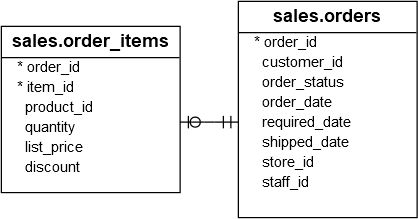Summary: in this tutorial, you will learn about the SQL Server SUM IF function to calculate the sum of values based on a condition.
Introduction to SQL Server SUM IF
In SQL Server, the SUM is an aggregate function that allows you to calculate the total of values in a set. Here’s the syntax of the SUM function:
SUM(expresion)Code language: SQL (Structured Query Language) (sql)The IIF function allows you to return a value when a condition is true or another value when the condition is false. The following shows the syntax for the IIF function:
IIF(condition, value_if_true, value_if_false)Code language: SQL (Structured Query Language) (sql)When combining the SUM function with the IIF function, you can calculate the sum of values based on a condition.
The following shows how to use the SUM function with the IIF function:
SUM(IIF(condition, value_to_sum_when_true, value_to_sum_when_false))Code language: SQL (Structured Query Language) (sql)In this expression:
condition: Specify the condition that you want to include values for calculating the total.value_to_sum_when_true: Specify the value that you want to calculate the total if the condition is true.value_to_sum_when_false: Specify the value that you want to calculate the total when the condition is false.
SQL Server SUM IF example
Let’s explore an example of using the SUM IF.
We’ll use the sales.orders and sales.order_items tables from the sample database:

1) Basic SUM IF example
The following example uses the SUM function with the IIF function to calculate the total amount of pending orders with the order status 1:
SELECT
SUM(
IIF(
o.order_status = 1,
quantity * list_price * (1 - discount),
0
)
) total_pending_amount
FROM
sales.order_items i
INNER JOIN sales.orders o ON o.order_id = i.order_id;Code language: SQL (Structured Query Language) (sql)Output:
total_pending_amount
--------------------
388739.5422Code language: plaintext (plaintext)The output indicates that the total pending amount is about 388,739.
2) Using multiple SUM IF example
The following example uses the SUM with the IIF function to calculate the total amount of pending and rejected orders with the order status 1 and 3 respectively:
SELECT
SUM(
IIF(
o.order_status = 1,
quantity * list_price * (1 - discount),
0
)
) total_pending_amount,
SUM(
IIF(
o.order_status = 3,
quantity * list_price * (1 - discount),
0
)
) total_rejected_amount
FROM
sales.order_items i
INNER JOIN sales.orders o ON o.order_id = i.order_id;Code language: SQL (Structured Query Language) (sql)Output:
total_pending_amount | total_rejected_amount
---------------------+----------------------
388739.5422 | 208579.4531Code language: plaintext (plaintext)Summary
- Use the
SUMfunction with theIIFfunction to form aSUM IFfunction that returns the total values based on a condition.